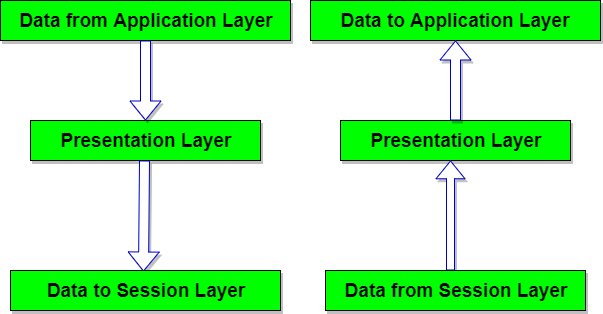The presentation layer (Layer 6) ensures that the message is presented to the upper layer in a standardized format. It deals with the syntax and the semantics of the messages.
The main functions of the presentation layer are as follows:
- It encodes the messages from the user dependent format to the common format and vice versa, for communication among dissimilar systems.
- It is responsible for data encryption and decryption of sensitive data before they are transmitted over common channels.
- It is also responsible for data compression. Data compression is done at the source to reduce the number of bits to be transmitted. It reduces the storage space and increases the file transfer rate. It is particularly useful for the transmission of large multimedia files.
How A Presentation Layer Works
The presentation layer works by converting information into a wide variety of file formats and forms of encryption. The presentation layer does this by using built-in algorithms and is able to standardize information whether it is handled by XML, C++, or TLV. In addition to passing information from the application layer to the session layer, the presentation layer is also responsible for passing information from the session layer to the application layer.
The presentation layer is used for a number of applications. For example, HTTP, a protocol that is used in virtually all web browsers and is actually a protocol of the application layer, uses the presentation layer in order to display data in a variety of different languages and formats, allowing the same information to be displayed on numerous platforms and devices.
Advantages
The presentation layer is advantageous because it is able to handle all data conversions for an application before the information is sent to the session layer. Because the session layer does not modify the actual data that it receives, it is important that the presentation layer converts data into the appropriate format and encrypts it for privacy and authentication.









No comments:
Post a Comment